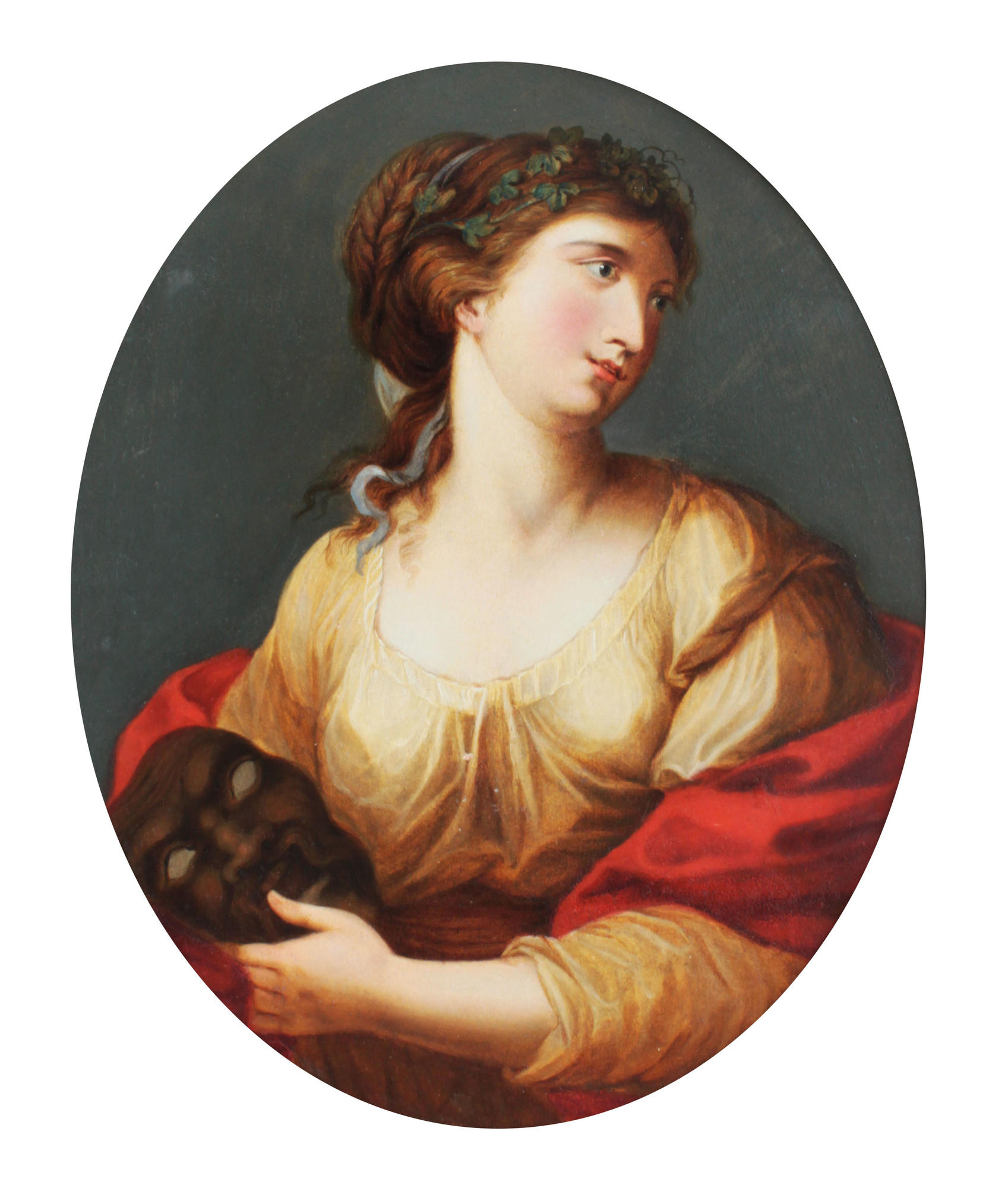Melpomene — the Muse of Tragedy is the painting by German painter and graphic artist Angelika Kauffmann, one of the most well-known women of the European Enlightenment. It is painted as an allegory — the idea represented in the form of an image. Melpomene is a part of a pair composition made of copper. The second work is called Clio — the Muse of History and is also displayed in the Stavropol Krai Museum of Fine Arts. Melpomene and Clio are looking at each other from the plates. The first one is holding a dark mask in her hands, the second is leaning on a military helmet holding a dagger. Both muses are wearing light chitons and red mantles on their shoulders. Melpomene has a wreath of leaves on her head, Clio has a comb with stones in her hair.
Melpomene — the Muse of Tragedy
Creation period
late 18th — early 19th centuries
Dimensions
42x33 cm
42х33 (oval)
42х33 (oval)
Technique
oil on copper
Collection
2
Open in app#3
Angelika Kauffmann
Melpomene — the Muse of Tragedy
#2
#4
Angelika Kauffmann. ‘Melpomene — the Muse of Tragedy’ and ‘Clio — the Muse of History’. Stavropol Krai Museum of Fine Arts.
#5
Angelika Kauffmann was born in Switzerland and raised in the Austrian town of Vorarlberg. Her father Johann Joseph Kaufmann was her first teacher, the girl started painting when she was six. As a child Angelika learnt German, Italian, French and English, engaged in music and literature. She received her first commission at the age of 11, and a year later was already working as a professional artist. At that time, Angelika painted her first self-portrait.
Most of her life was related to Italy: at age 13 Angelika went to Milan together with her father and since 1764 was living in Rome and Venice. In Rome Kaufmann became friends with Johann Winckelmann, a German art historian, who became her first teacher outside her family and imparted to her the love of antiquity. Kaufmann got interested in historic painting and faced a challenge — at the time women were not allowed to study art theory and academy figure as distinct from male artists. Angelika managed to overcome the prohibition.
In 1762 Kaufmann became a member of the Academy of Fine Arts in Florence, and in 1765 — a member of St Lucas Art Academy in Rome. At that time, Angelika won general recognition and painted historic and literary subjects. In 1766, Kaufmann moved to England where she lived for 15 years. Angelika was the only female artist to become a founder and member of the Royal Academy of Arts. At that time, she participated in painting the murals in St Paul’s cathedral and mansions designed by Adams brothers. In 1781, Angelika got married and returned to Rome where she continued working. She died after an illness in 1807. In the same year, the bust of Angelika Kauffmann was installed in the Pantheon in Rome.
Most of her life was related to Italy: at age 13 Angelika went to Milan together with her father and since 1764 was living in Rome and Venice. In Rome Kaufmann became friends with Johann Winckelmann, a German art historian, who became her first teacher outside her family and imparted to her the love of antiquity. Kaufmann got interested in historic painting and faced a challenge — at the time women were not allowed to study art theory and academy figure as distinct from male artists. Angelika managed to overcome the prohibition.
In 1762 Kaufmann became a member of the Academy of Fine Arts in Florence, and in 1765 — a member of St Lucas Art Academy in Rome. At that time, Angelika won general recognition and painted historic and literary subjects. In 1766, Kaufmann moved to England where she lived for 15 years. Angelika was the only female artist to become a founder and member of the Royal Academy of Arts. At that time, she participated in painting the murals in St Paul’s cathedral and mansions designed by Adams brothers. In 1781, Angelika got married and returned to Rome where she continued working. She died after an illness in 1807. In the same year, the bust of Angelika Kauffmann was installed in the Pantheon in Rome.
#6
Stavropol Krai Museum of Fine Arts
read morehide
00:00
00:00
1x
Melpomene — the Muse of Tragedy
Creation period
late 18th — early 19th centuries
Dimensions
42x33 cm
42х33 (oval)
42х33 (oval)
Technique
oil on copper
Collection
2
Open in app
Share





